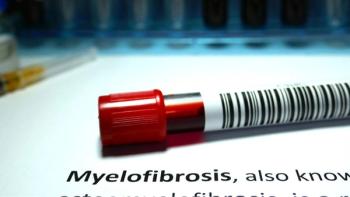
UGN-102, a Direct-to-Bladder Therapy, Improves Bladder Cancer Outcomes
Findings from the phase 3 ATLAS and ENVISION trials reveal a non-surgical way to possibly benefit patients with low-grade, intermediate- risk non-muscle invasive bladder cancer.
UGN-102 led to improved disease-free survival and reduced risk of progression or death in patients with low-grade, intermediate- risk non- muscle invasive bladder cancer, according to findings from the phase 3 ATLAS and ENVISION trials announced by UroGen Pharma, the manufacturer of the agent.
These trials identified UGN-102 a potential intravesical (being inserted into the bladder rather than being ingested orally) solution for the cancer, according to a press release from UroGen Pharma.
“UGN-102 has demonstrated a robust and consistent therapeutic profile across multiple clinical trials, providing a compelling picture of its potential to be a transformational product and advance the standard of care away from repetitive surgery to a minimally invasive, non-surgical option for (low-grade, intermediate- risk non- muscle invasive bladder cancer),” Liz Barrett, president and chief executive officer of UroGen, said in the release.
The ATLAS trial, which investigated the safety and effectiveness of UGN-102 with and without transurethral resection of the bladder (TURBT), included 282 patients with low-grade, intermediate- risk non- muscle invasive bladder cancer. Results revealed that UGN-102 reduced the risk of recurrence, progression or death by 55%, meeting its primary endpoint, according to UroGen Pharma. UGN-102 also resulted in a 64.8% complete response rate (no signs of cancer after treatment) at three months compared to a 63.6% complete response rate from TURBT alone, according to UroGen.
“While TURBT is the standard treatment for bladder cancer, the recurrent nature of (low-grade, intermediate- risk non- muscle invasive bladder cancer) means that patients will undergo multiple surgeries that come with risks for this older patient population,” said Dr. Sandip Prasad, director of Genitourinary Surgical Oncology at Morristown Medical Center/Atlantic Health System in New Jersey.
The ENVISION trial investigated 240 patients with the disease to determine the safety of UGN-102 as a chemoblative therapy.
Results revealed that UGN-102 had a 79.2% complete response rate following three months of treatment, meeting its primary endpoint.
UGN-102 is a hydrogel-based formula used to expose bladder tissue to the cancer drug, mitomycin, for an extended period of time. This way of treating the tumor is non-surgical, and its side effect profile was common to other clinical trials based on UGN-102.
“If approved (by the Food and Drug Administration), we anticipate UGN-102 to be a significant growth driver for UroGen as the first-ever non-surgical treatment option for a disease afflicting approximately 82,000 new patients in the U.S. each year. We are on track to deliver on our previously shared guidance for (mitomycin) and now find ourselves on the precipice of a new era in bladder cancer care, and that is a very exciting place to be,” explained Barrett.
The pharmaceutical company expects to submit a New Drug Application to the U.S Food and Drug Administration in 2024 as more data examining the endpoint of duration of response is discovered.
“Based on these compelling data, I am optimistic that UGN-102, if approved, may change the treatment paradigm for these patients who lack non-surgical options to manage the ongoing burden of this highly recurrent disease,” explained Prasad.
For more news on cancer updates, research and education, don’t forget to




